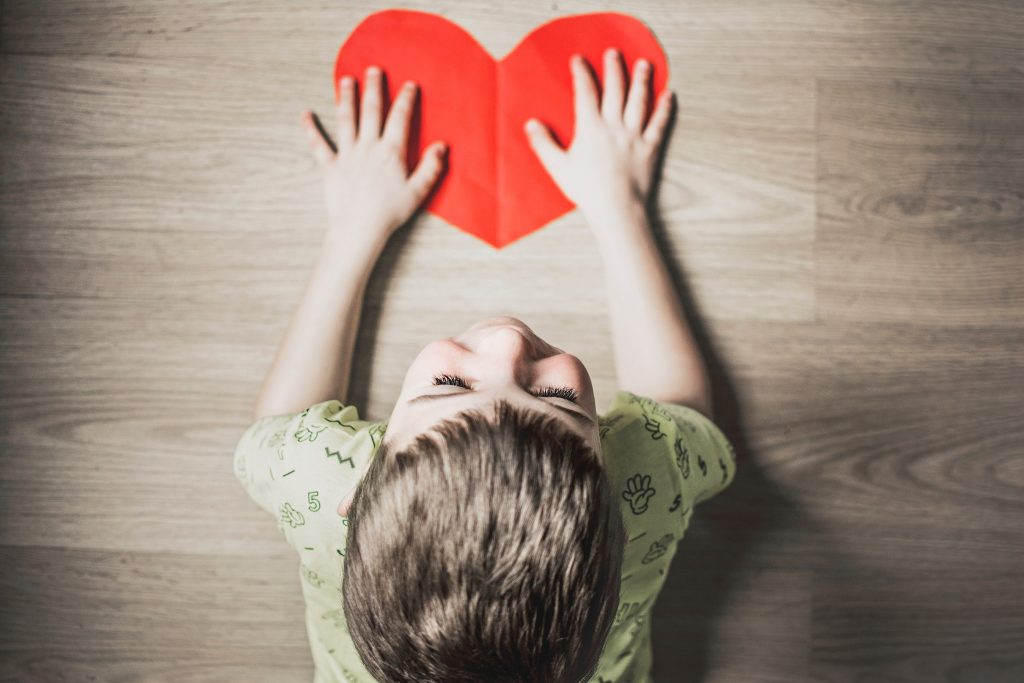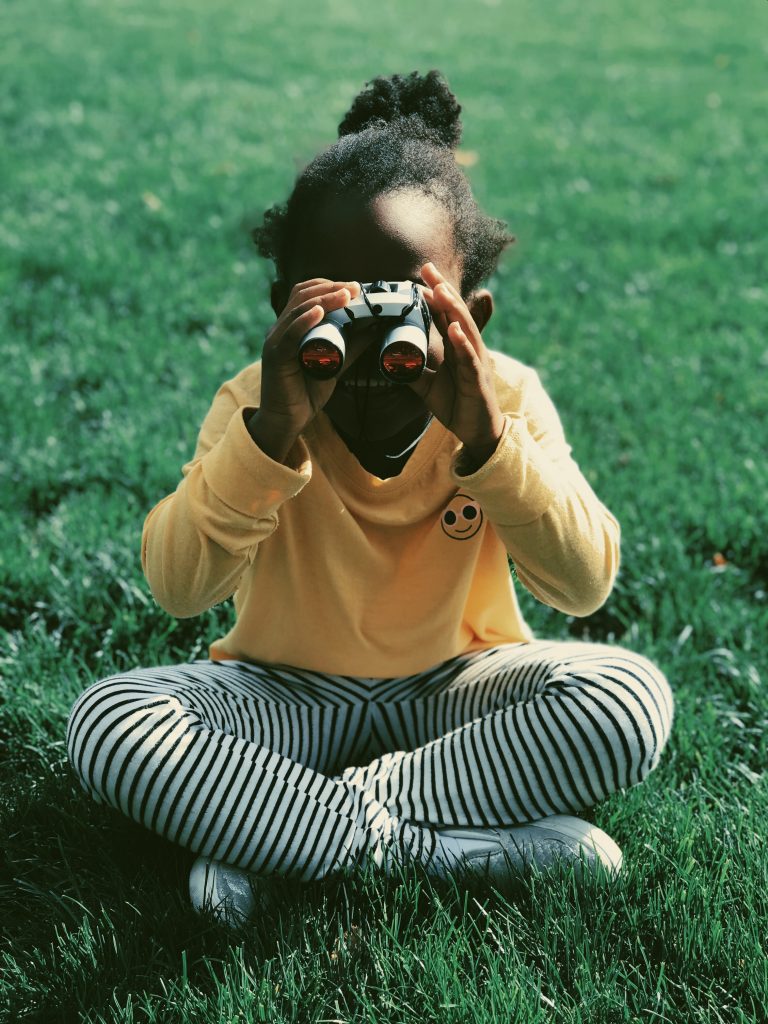This fall, many children and teens will be returning to school in person after a year or more of relative isolation. With this transition may come anxiety about what classmates will think of them, fear of getting sick, or worry about being able to make new friends. Our society has a history of valuing some feelings more than others. Worry and fear often serve very useful purposes. Sometimes however, worry or fear become excessive take us in a direction that we don’t want to go in. Last month on this blog, we talked about how reassurance from parents typically doesn’t help children overcome anxiety. We introduced 3 constructive ways parents can respond instead. This month, we explore 4 tools children and teens can use to help them reduce their anxiety and make new friends when they go back to school this fall.
Practice Compassion
Did you know? People who respond with greater compassion to their own suffering and the suffering of others experience less anxiety. What’s more, kids can increase their ability to be compassionate through regular practice. In a previous blog, we discussed the 3 elements of self-compassion (mindfulness, common humanity, and self-kindness). This fall, it may be especially important to encourage your children remind themselves that they are not alone in this, and that many other children (as well as adults) are struggling to navigate this transitional time. To hit this message of common humanity home, consider sharing personal examples of pandemic-related worries you or others you know experience.
The word “compassion” literally means “to suffer with.” When children expand their focus beyond their own concerns and begin to recognize that others are experiencing similar emotions, their anxiety decreases, they begin to open up with their peers, and they start to make friends.
Try this: Invite your child to pretend a good friend came to them with the exact same problem they have. Ask them to write down or tell you what they would say to help their friend feel better.

Cultivate Curiosity
Here’s another experiment to try with your child: Think of something that makes you very anxious. Take 10 seconds to feel really anxious about it. Then take a moment to cultivate curiosity about your right hand. Ask yourself: What does my right hand feel like right now? Is it hot, warm, cold, tingly, tight, achy, relaxed? Does the back of your hand feel different from the palm of your hand? In what way? Slowly sense each part of your hand. What does each finger feel like? Then look closely at your hand. Notice differences in texture and color of your skin on each part of your hand, including each finger. Get really curious and note what you observe.
Now notice: What happened to your anxiety? If you were truly being curious, your anxiety probably vanished or at least decreased a bit. That’s because you can’t experience both fear and curiosity at the same time. As author James Stephens wrote, “Curiosity will conquer fear even more than bravery…”
You can teach your children to use this to their advantage. Every time your child worries about something, such as what other kids are thinking of them, have them turn on their “curiosity switch.” Encourage them to notice their body sensations or the different colors and objects in the room around them, and be super curious about what the teacher says when he/she is talking or about how the teacher speaks. Inspire your child to mindfully observe the other kids around them and come up with questions they might want to ask. As children begin to cultivate their curiosity in this way, they may begin to recognize and embrace others’ similarities and differences, and connect with others more easily.

Acknowledge What You Can’t Control
Especially during these uncertain times, children often worry about things they can’t control. As your child learns to cultivate curiosity, you can encourage them to become curious about what kind of anxiety they are experiencing. Here are some important questions you can teach them to ask themselves:
“Do I have any control over this situation?”
“What do I have the power to control?”
“What can I do to help in this situation?”
“Is this fear real or hypothetical?”
If something is out of your child’s control, they can learn to acknowledge it, and replace their worry behavior with other, more helpful strategies such as compassion practice, more curiosity about their worry, or…
A powerful way to build confidence and tame fear is to practice seeing yourself in your mind’s eye successfully going through each part of your day. You can practice visualization with your child before the first day of school, or more regularly for recurrent anxiety. Many report that practicing visualization helps them get through a challenging day with greater ease.
Visualization
Some children can “see pictures” of places, people, and things in their mind very accurately, while others may struggle to see images in their imagination. If your child falls into the later category, they may still be able to use visualization to help them prepare for an upcoming event. Instead of literally seeing themselves in their mind’s eye, they may be able to feel their body going through the motions of their daily activities or see keywords in their mind’s eye. These are all valid alternative ways to experience visualization which can be helpful.
Curiosity will conquer fear even more than bravery will.
James Stephens
Lead your child through a visualization at a time when they feel relatively calm. Encourage your child to take some deep inhales and long exhales before you begin. Once your child feels relaxed, invite them to close their eyes and imagine walking through each part of their big day, calmly and confidently. Start the visualization at the very beginning of their day when they wake up, get dressed, brush their teeth, and have a good breakfast. Continue by having them imagine traveling to school, meeting other kids, getting to their classroom on time, etc. In your guided visualization, you can encourage your child to imagine taking deep breaths when they start to notice feelings of anxiety in their body. You can also help them imagine sending kind thoughts of loving kindness to others they see walking down the hall. Finally, invite your child to visualize coming home after school and reflecting on what they were grateful for that day. With practice, children can learn to lead themselves through a visualization on their own.
Stay tuned to this blog for more tips on how to help your child overcome anxiety and fear… At Intuition Wellness Center, we specialize in health and wellness services for children, young adults and families. If you think you would like some extra support, we’re here for you!


